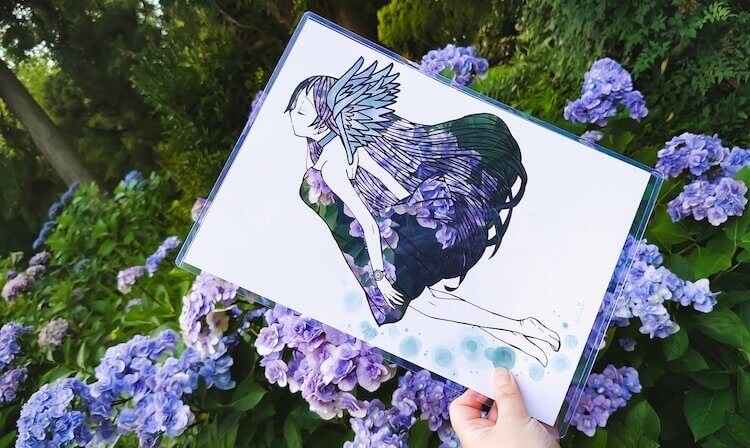
Blog
The Beauty and Significance of Kirie: Exploring the Intricate Japanese Art of Paper Cutting

Kirie is a traditional Japanese art form that involves the cutting of paper into intricate designs. The name kirie is derived from the Japanese words “kiru” meaning to cut and “e” meaning picture or image. This art form is believed to have originated in China and then spread to Japan, where it developed into a unique form of artistic expression.
Kirie has a long history, with the earliest known examples dating back to the 8th century in Japan. During the Heian period (794-1185), kirie was used to create intricate designs on paper that were used in religious ceremonies and for decorating temples and shrines. During this time, paper was a precious and valuable commodity, and the art of kirie was reserved for the nobility and the wealthy.
During the Edo period (1603-1868), kirie became more widely practiced and popularized. Paper was more affordable and accessible, and artists began to experiment with new techniques and designs. It was during this time that kirie began to evolve into a more independent art form, with artists creating works solely for the sake of art and not just for functional purposes.
One of the most famous kirie artists of the Edo period was Shibata Zeshin, who was known for his intricate and detailed designs. Zeshin was particularly skilled in creating kirie designs of landscapes and nature, and his works are still admired and studied by kirie enthusiasts today.
Kirie continued to be popular throughout the Meiji period (1868-1912) and into the modern era. During this time, kirie artists began to incorporate more modern and contemporary themes into their work, including portraits of famous figures and political satire. Today, kirie is practiced and appreciated around the world, with many contemporary artists incorporating traditional kirie techniques into their work.
Kirie has a rich cultural significance in Japan, and is often used in religious ceremonies and festivals. It is also used in traditional architecture and design, and is a popular art form among children who enjoy creating kirie designs as a hobby. The intricate and delicate nature of kirie designs also makes them popular as decorations for special occasions such as weddings and anniversaries.
Kirie is also significant from a scientific and engineering standpoint. The principles of kirie have been used to study the behavior of materials and structures at the nanoscale level, and kirie-inspired designs have been used to create flexible and adaptable materials and structures.
In addition to its cultural and scientific significance, kirie has also been embraced by the art and design world. Many contemporary artists and designers incorporate kirie techniques into their work, creating intricate and beautiful designs that push the boundaries of what is possible with paper. Kirie-inspired designs have been used in fashion, architecture, and product design, among other fields.
Overall, kirie is a fascinating and intricate art form with a long and storied history. Its cultural, scientific, and artistic significance continue to make it an important part of Japan’s rich cultural heritage, and its intricate and beautiful designs continue to inspire creativity and innovation around the world.





 Christmas
Christmas Father’s Day
Father’s Day Valentine’s Day
Valentine’s Day Easter
Easter Thanksgiving
Thanksgiving Halloween
Halloween
 Birthday
Birthday Wedding
Wedding Anniversary
Anniversary Graduation
Graduation Baby Shower
Baby Shower House Warming
House Warming
 For Him
For Him For Her
For Her For Kids
For Kids
 Floral
Floral Animals
Animals Trees
Trees Architecture
Architecture Vehicle
Vehicle LGBTQ+
LGBTQ+ Just Because
Just Because
 Pop-up Box
Pop-up Box Pop-up Stand
Pop-up Stand